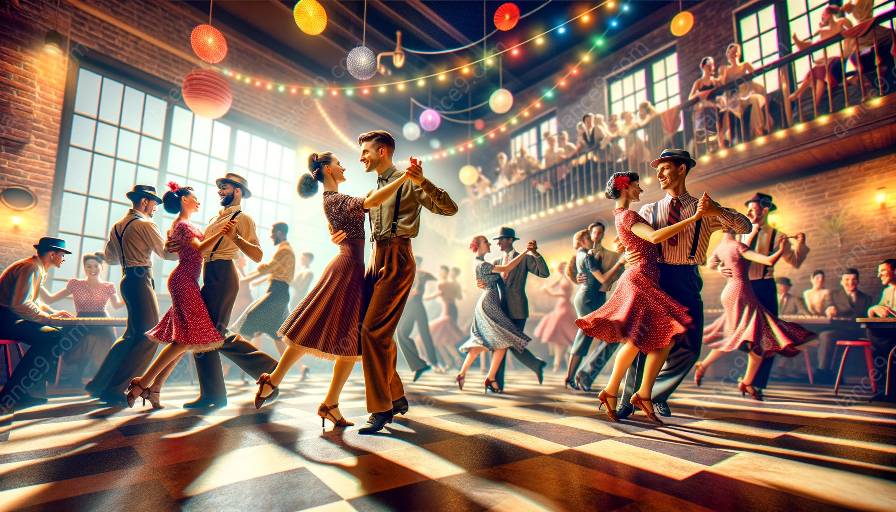Swing dance is a dynamic and rhythmic form of expression that has a profound impact on musicality and rhythm. This unique dance style not only influences music but also draws from various musical genres, creating a vibrant and energetic atmosphere. In this comprehensive guide, we will delve into the relationship between swing dance, musicality, and rhythm and how it enriches dance classes.
The Relationship Between Swing Dance and Musicality
At its core, swing dance is deeply intertwined with musicality. Its syncopated and lively nature reflects the spirited character of swing music, characterized by its emphasis on the off-beat rhythm. The partnership between swing dance and music is a vibrant exchange, with dancers accentuating the swinging rhythms through their movements, creating a visually compelling and sonically harmonious experience.
Through intricate footwork, spins, and leaps, dancers interpret the music's dynamics, tempo, and mood, amplifying the emotional depth of the music. This synchronization between movement and music not only enhances the dancers' performances but also serves as a testament to the strong bond between swing dance and musicality.
Enriching Rhythmic Expression
Swing dance significantly impacts rhythmic expression, as it encourages dancers to explore various rhythmic patterns and syncopations within the music. The dynamic interplay between dancers and musicians often leads to improvisation and spontaneous rhythmic exchanges, further enhancing the overall experience.
Moreover, the lively and syncopated nature of swing dance fosters a strong sense of rhythm and timing among dancers. This heightened rhythmic awareness not only benefits their dance performances but also extends to their engagement with other dance styles and musical genres.
The Influence on Dance Classes
Swing dance's impact on musicality and rhythm extends to dance classes, where it serves as a rich source of inspiration and education. By incorporating elements of swing dance into their curriculum, dance instructors can enhance their students' understanding of musical interpretation and rhythmic expression.
Furthermore, the infectious energy and exuberance of swing dance can infuse dance classes with a newfound liveliness, motivating students to explore and embrace the rhythmic nuances of various musical compositions. The inclusive and social nature of swing dance also fosters a sense of community and camaraderie within dance classes, enriching the overall learning environment.
Embracing the Vibrancy of Swing Dance
Swing dance's impact on musicality and rhythm is undeniable, as it embodies the essence of joyful expression and rhythmic synergy. Its influence extends beyond the dance floor, leaving an indelible mark on music, dance, and the collective spirit of performers and enthusiasts alike.
As dancers immerse themselves in the infectious rhythms and melodies of swing music, they not only elevate their dance proficiency but also embrace the sheer exhilaration of musical and rhythmic exploration.













































































